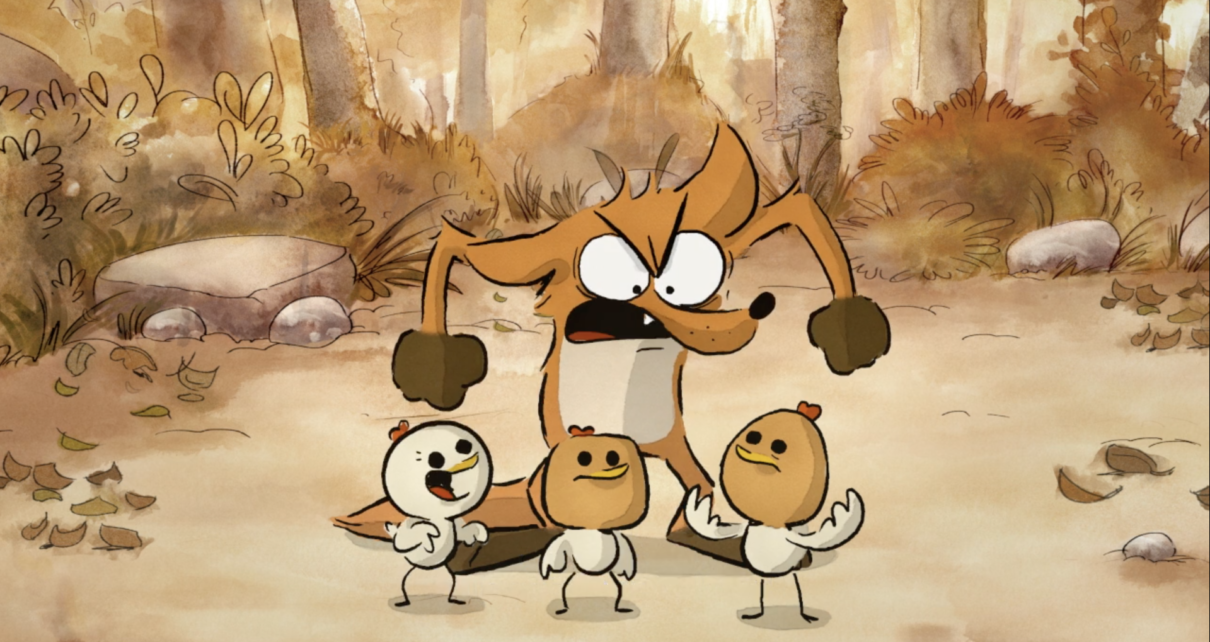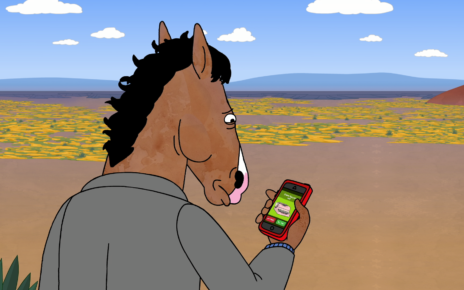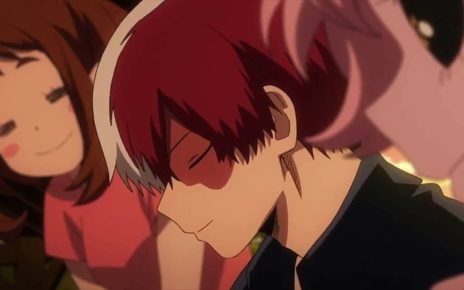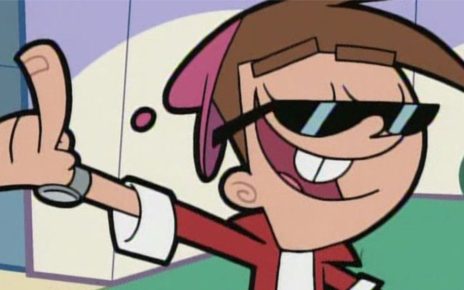AIF Chats
Part of a series of chats we had with directors at the Animation Is Film Festival.
In the field of animation especially, such words as “cute” and “innocent” are often synonymous with a critical death sentence. To many, it’s easy for an animated feature to be cute and inviting, and to tell safe and reliable jokes that allow parents to rest their eyes as their kids are entertained just enough to subdue them for an hour and a half or so. The proof is in the output: Mainstream American animation studios from Dreamworks to Disney are responsible for pumping out, among their other offerings, commercially friendly eye candy that doesn’t do much beyond keep the kids quiet. (The Emoji Movie, anyone?)
It would have been easy for The Big Bad Fox and Other Tales to fit such a mold. And make no mistake, the film—created by a small team of animators in France—is decidedly easygoing in tone. But what separates The Big Bad Fox and Other Tales from your standard friendly kid’s animation is how it is handled — that is, with such craft, care, and respect that the the goofy humor and character dynamics feel universally engaging.
Big Bad Fox centers around a group of offbeat animals living on a comically dysfunctional farm. Broken into three separate acts, the stories are presented as short skits by a troupe of theatre-loving critters who can’t seem to maintain a level of professionalism. Each short is filled to the brim with adorable character design, well-timed vocal performances, and expertly-produced slapstick comedy. The tales take much of their inspiration from nursery rhymes and fairytales, but the film brings an offbeat, quirky approach to the material, and its loose 2D animation style is filled with simple charm.
The film’s two core creators, French animators Benjamin Renner and Patrick Imbert, sat down with The Dot and Line last month for an interview on craft, cuteness, and why cartoons are such a beloved form of storytelling in the first place.

The Dot and Line: Big Bad Fox is as hilarious as it is heartfelt, and clearly a labor of love. How do you feel now that it’s out?
Patrick Imbert: Well, uh, surprising. You know, the project started as a 30 minute short TV special.
Benjamin Renner: And then it became three TV specials when it became a feature. So we were not really expecting, or hoping it would be a feature.
PI: It was on cinema in France. And then…
BR: And then in Hollywood!
PI: So we are more than surprised, actually.
BR: We were just expecting so see it on little televisions on this one channel, at maybe four in the afternoon. So being here, talking about this film….
PI: It started out as a very humble project.
D&L: That humility, that small scale, is still intact. And as you’ve mentioned before: you didn’t have a huge budget or team for this. But being outside a big studio, you had a different level of creative freedom. How does it feel to start out with these humble origins and end up in Hollywood with a premiere on a huge screen? And what is the importance in keeping your independence and freedom as your films start to get more exposure and grow little bigger?
BR: Well, for us, we are in Hollywood, and that’s great. But we know what our film is worth and where it comes from. So we don’t really see things differently…. And even when we are here, there’s this: doing promotion of the Academy Awards. In a way, we are not trying to expect too much of these things as well, because we don’t want to have our heads blowing up and us starting to think: “We did the best thing in the world!” You know, if the audience likes it, that’s enough. We are already pleased. When people see it and we hear people laugh, that’s exactly what we were looking for and we don’t want anything more. And we are trying not to think too much about Hollywood and the hope of the Academy Award nomination and stuff like that. If that ever happens, it would be the weirdest thing.
PI: Regarding the freedom that we have, we are very lucky that we have a producer that trusts us a lot. And we had a very big freedom on this project — we did the things our way. The goal was just to do something good. But we managed everything. We changed many things on our storyboard without showing it to the producer, and he doesn’t care.
BR: Not that he doesn’t care, but he is trusting us. We want the same things [from the film], so he doesn’t need to watch it over and over again.
PI: And this is a condition that we could not have here. You know, in big studios, it’s not like this.
D&L: Everything has to hit a certain demographic, and has to include this and that.
PI: Exactly. And, you know, we have friends in the studios here—in Dreamworks, for example. And they all say…well, they are very happy to be there. It is cool! But they are jealous about our freedom. It is funny.
D&L: It’s strange how rare it is to have that sort of freedom when you’re making a film nowadays, considering that it’s such a big investment for other people.
PI: Unfortunately.
BR: But to be honest, when we are talking about freedom—what we are doing is not the most…it’s personal of course, but it’s not the most…we are not talking about very hard subjects. It was meant for a lot of people. And the producer was comfortable with that as well. You know, you have a story like The Breadwinner, I mean…
PI: Yeah, it’s not that easy for The Breadwinner. It can be divisive because there are politics around it.
BR: Yeah, exactly. So I think the producer was trusting us also because he knew we were doing something in the direction that he likes.
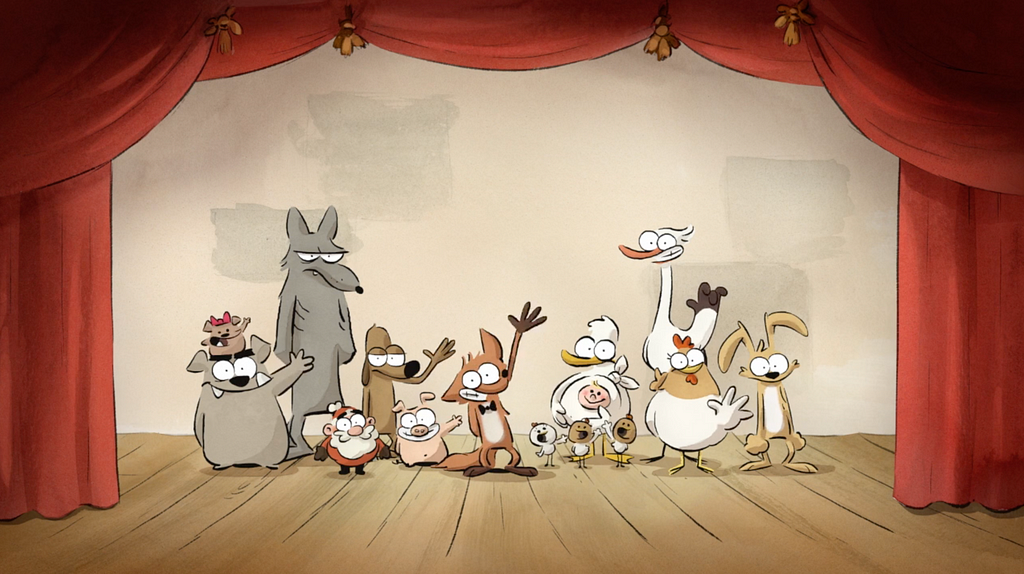
D&L: You said he original short was meant for TV, and you can kind of tell by the structure that the shorts have an episodic feel. Do you guys have any plans for the future? Maybe adapting this movie for TV? Maybe exploring these characters and stories more?
BR: To be honest, that is not really a goal for me. I created these characters when I was a teenager, and they are characters I would draw for my family, or for recreational purposes. I would just draw to relax and have fun and do some gags with those characters. So I always want those characters to remain something pleasant and recreational. That is why I am not pushing these things too far, so it doesn’t become work and I am not getting exhausted with them. I just want to have fun with them, so what I’m doing right now is, I have a project with them, but it’s not related to cinema. Maybe more for graphic novel or something like that. But for a feature, it takes so long, and such a long process involves so many people that I don’t really want to push it too far. Maybe one day if I feel the motivation, but so far, not really.
D&L: The facial expressions of all the characters in the film are so lively, and the audience gets such a sense of character from them. What can you say about animating the faces and the work that went into it?
PI: We pay a lot of attention to this. Because the face is what’s talking to the audience.
BR: Yeah, and it’s not really beautiful drawing. In terms — if you compare them to very great artists — it’s not meant to be beautiful. It’s not even intended. So what was important is, it must be expressive. Even the bodies are basically just two lines — it’s really sketched. So of course the expression was really important, and we had to work on that quite a lot. Also, trying to match the voice — we didn’t want to have silly voices from cartoons, you know? We wanted the actors to play natural, so we also focused on the acting of the characters. It had to match the natural voice of the characters but still be expressive. But not overdoing things. It was a constant balance.
D&L: The image that stuck with me the most, was when a bird is giving the main characters directions and they are just looking up and nodding in shock.
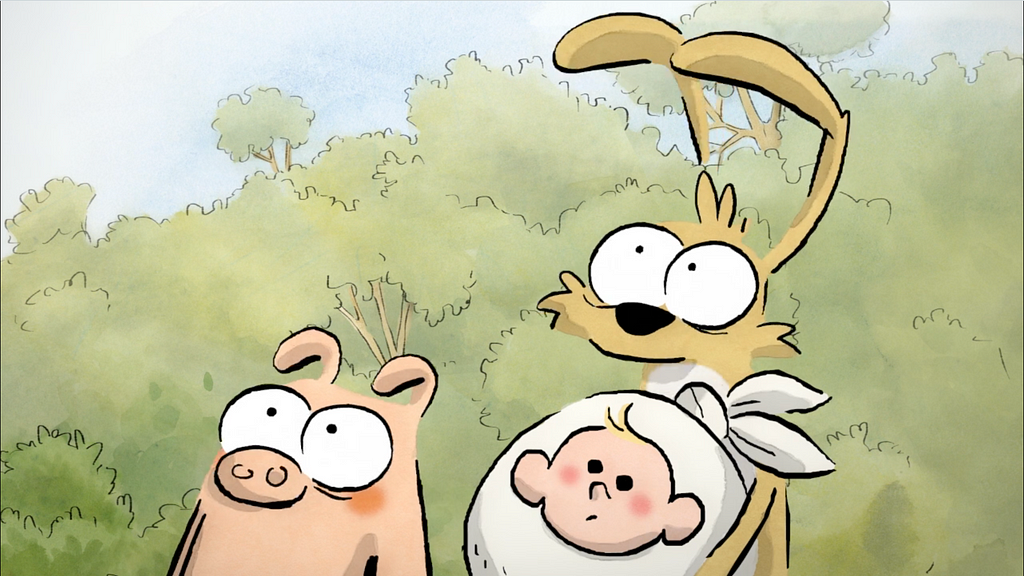
PI: No, you see, this is a good example. Even if it’s a sketch-looking drawing, we spend a lot of time to have the exact movement that is needed. For this movement, if you do it too roughly, it’s not working. So, the animator on this shot payed a lot of attention to make it how it must be.
D&L: All the animation and comedy and storytelling is so visual and physical. It’s very slapstick. Like Charlie Chaplin.
PI: Well, animation is visual. It’s too bad if you don’t use the visual side of it.
BR: Yes, of course. It was a big reference to Chaplin and Buster Keaton and stuff like that. Also, when I did the graphic novel, it’s really chatty. And when I started doing the translation — we started with [the story] “The Big Bad Fox” — it had too much dialogue, and suddenly I realized that animation was really about physical comedy. So we emphasized that, and worked on a lot of gags that were going to be visual.
PI: You cannot talk too much, because it’s boring. You just have to say only what is needed.
BR: And also, in the first draft of the storyboard, the fox was always talking to himself. Because you know, in graphic novel, they talk because it isn’t always clear. But in animation, you’re just like, “There’s no one here — why are you talking?”
D&L: That’s the thing about the movie. A lot of people already respect animation as a form, but, at least in this country, many still see it as only geared toward a younger demographic. But this film respects every potential audience. There’s some adult humor in it — it works on a universal level.
PI: We try to do so, you know? Yes. We are respectful of the audience. I think it’s really important. You do this for the audience, you know, not just yourself.
BR: [Patrick] and I would never do a film that we wouldn’t be pleased to watch. So that’s why we were trying to find jokes that were going to make us laugh.
PI: It has to be apparent, in everything you make.
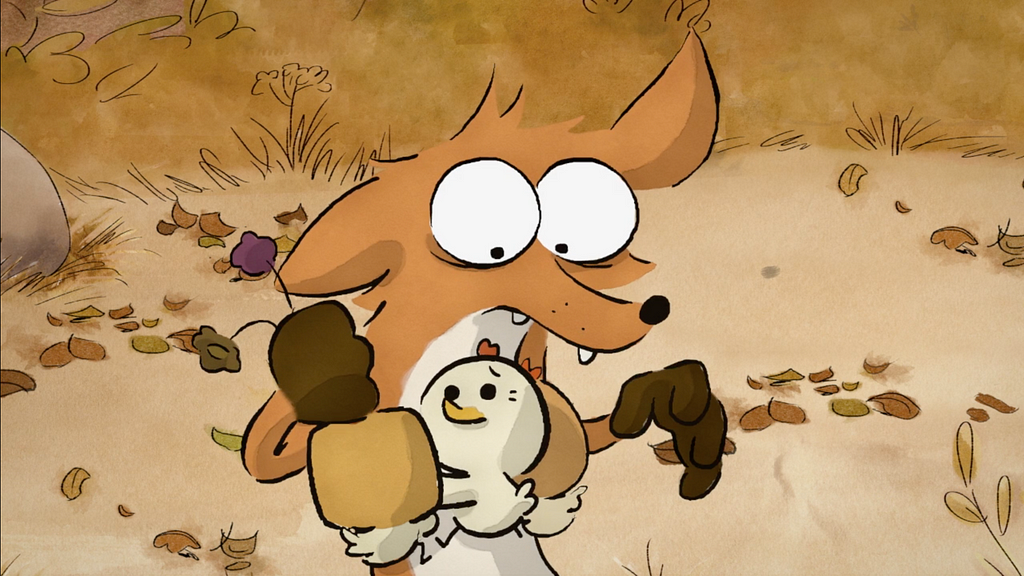
D&L: Your stories are playful, especially the original one, “The Big Bad Fox.” But there’s also a certain darkness in the humor too—the fox is considering eating these children that eventually become his own kids. And it kind of reminds me of a Grimm fairytale. Were you inspired by fables or fairy tales?
BR: I’m always really fascinated by the ogre myth. I realize when you are a child, parents are all ogres—like they could completely destroy you if they suddenly decided that. So I like this idea of this character that you love who is supposed to eat you. And, if you think about it, that could be a very creepy theme. But it could be the pitch of the whole film’s theme as well. And I like to have this balance. It was the same as Ernest and Celestine, with the bear adopting the mouse. Anytime, he could eat the mouse. And I think it is an interesting type of storytelling to have this weird couple and balance in the relationship of the characters. One could definitely eat the other. But let’s hope not.
Thanks for reading The Dot and Line, where we talk about animation of all kinds. Don’t forget to for this article and follow us on Twitter and Facebook.


